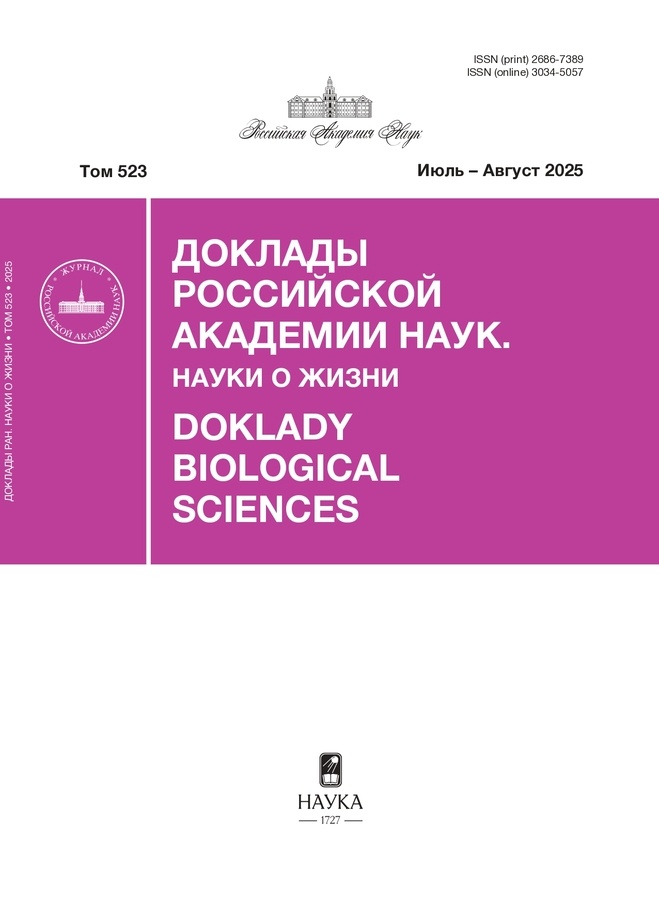Микроструктура волос мумии детеныша саблезубой кошки – гомотерия †Homotherium latidens (felidae, carnivora)
- Авторы: Чернова О.Ф.1, Климовский А.И.2, Протопопов А.В.2,3
-
Учреждения:
- Институт проблем экологии и эволюции имени А.Н. Северцова РАН
- Академия наук Республики Саха (Якутия)
- Северо-Восточный федеральный университет имени М.К. Аммосова
- Выпуск: Том 521, № 1 (2025)
- Страницы: 173-179
- Раздел: Статьи
- URL: https://vestnik.nvsu.ru/2686-7389/article/view/683995
- DOI: https://doi.org/10.31857/S2686738925020017
- ID: 683995
Цитировать
Полный текст
Аннотация
Впервые с помощью световой и сканирующей электронной микроскопии (СЭМ) изучена микроструктура волос из различных участков тела трехнедельного котенка плейстоценового гомотерия †Homotherium latidens, замороженная мумия которого возрастом 31808–37019 лет была найдена в Якутии и впервые описана российскими палеонтологами [1]. По нашим данным, гомотерий имел слабо дифференцированную короткую однообразную спутанную темно-бурую шерсть, теплозащитные свойства которой не высоки из-за слабого развития сердцевины волос, но их механическая прочность была отменной. Микроструктура волос гомотерия отличается в зависимости от расположения волос на его теле. Сравнение полученных данных со сведениями о шерсти котят пещерного и африканского львов показывает черты сходства и различия в микроструктуре волос у этих видов, чему дано функциональное объяснение.
Ключевые слова
Полный текст
Об авторах
О. Ф. Чернова
Институт проблем экологии и эволюции имени А.Н. Северцова РАН
Автор, ответственный за переписку.
Email: olga.chernova.moscow@gmail.com
Россия, Москва
А. И. Климовский
Академия наук Республики Саха (Якутия)
Email: olga.chernova.moscow@gmail.com
Россия, Якутск
А. В. Протопопов
Академия наук Республики Саха (Якутия); Северо-Восточный федеральный университет имени М.К. Аммосова
Email: olga.chernova.moscow@gmail.com
Россия, Якутск; Якутск
Список литературы
- Lopatin A.V., Sotnikova M.V., Klimovsky A.I., et al. Mummy of a juvenile sabre toothed cat Homotherium latidens from the Upper Pleistocene of Siberia // Scientific Reports. 2024. V. 14: 28016 1.
- Chernova O.F. Comparative analysis of hair microstructure in the Cave lion (Panthera spelaea): A review // Earth History and Biodiversity. 2024. V. 2. № 100014.
- Соколов В.Е. Кожный покров млекопитающих. М.: Наука, 1973. 487 с.
- Соколов В.Е., Скурат Л.Н., Степанова Л.В., Шабадаш С.А. Руководство по изучению кожного покрова млекопитающих. М.: Наука, 1988. 279 с.
- Abràmoff M.D., Magalhães P.J., Ram S.J. Image processing with ImageJ // Biophotonics International. 2004. V. 11. № 7. P. 36–42.
- Чернова О.Ф., Целикова Т.Н. Атлас волос млекопитающих (Тонкая структура остевых волос и игл в сканирующем электронном микроскопе). М.: Товарищество научных изданий КМК, 2004. 428 с.
Дополнительные файлы

Примечание
Представлено академиком РАН В.В. Рожновым











